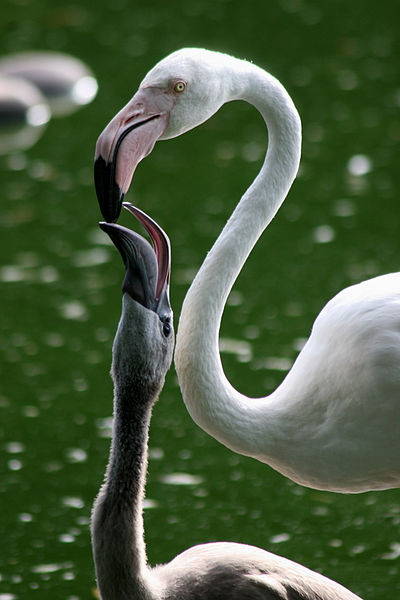The crop is a thin-walled, expanded portion of the alimentary tract, which is used for the storage of food before digestion. The crop is an anatomical structure in vertebrate animals, such as birds, and invertebrate animals, such as gastropods, earthworms, leeches, and insects.
Two white-bellied parrots with bulging crops after feeding.
One greater flamingo-chick in Zoo Basel is fed on crop milk.
Digestion is the breakdown of large insoluble food compounds into small water-soluble components so that they can be absorbed into the blood plasma. In certain organisms, these smaller substances are absorbed through the small intestine into the blood stream. Digestion is a form of catabolism that is often divided into two processes based on how food is broken down: mechanical and chemical digestion. The term mechanical digestion refers to the physical breakdown of large pieces of food into smaller pieces which can subsequently be accessed by digestive enzymes. Mechanical digestion takes place in the mouth through mastication and in the small intestine through segmentation contractions. In chemical digestion, enzymes break down food into the small compounds that the body can use.
Venus Flytrap (Dionaea muscipula) leaf
Trophozoites of Entamoeba histolytica with ingested erythrocytes
A Catalina Macaw's seed-shearing beak
Squid beak with ruler for size comparison






